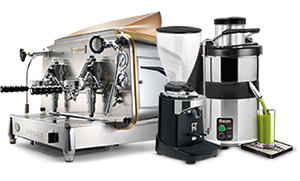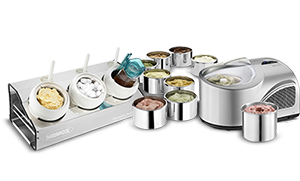Espresso vs Coffee: how do they differ? Although both drinks come from the same raw materials, namely roasted and ground coffee beans and hot water, the final result is certainly different.
In this article, Caffè Italia takes you to discover the main differences between a coffee and an espresso, from the preparation method to the result in the cup.
TERMINOLOGY
While the term “espresso” generally indicates a drink prepared with an espresso coffee machine, be it professional or for domestic use, “coffee” can be obtained using various systems and appliances, from the moka to the American coffee maker.
This difference was highlighted for the first time in Italy, when, following the invention of the moka by Alfonso Bialetti, the word “espresso” began to be used, up to the revolutionary Lampo system by Achille Gaggia, which gave birth to the “Italian espresso with natural cream“.
With its 25 ml, espresso is the most loved and drunk Italian coffee. For this reason, it is not surprising that the words “coffee” and “espresso” are very often used interchangeably when you want to order this drink at a bar or restaurant.

THE METHOD OF PREPARATION OF ESPRESSO VS COFFEE
A second difference between coffee and espresso is the preparation method, which varies depending on the system or technology used.
To obtain a coffee it is possible to use different appliances, from the moka to the modern Chemex, from the French Press coffee maker to the American kettle. Using the mocha, the pressure of the steam produced by the boiling water causes the water to pass through the filter and merge with the ground coffee, while for filter coffee or American coffee there is no pressure. In this case, the ground coffee is left in contact with hot water and then filtered.
To make an authentic Italian espresso with the characteristic crema on the surface, you need to use a manual or automatic espresso machine instead. The pressure of the hot water that passes through the ground and pressed coffee allows the extraction of the coffee oils, creating the characteristic layer of cream on the surface, and giving life to a truly unique drink.
The wide range of automatic and semi-automatic Gaggia espresso machines can satisfy every need and create a state-of-the-art, creamy and enveloping espresso.
More specifically, the Gaggia Classic Pro, dedicated to true lovers of Italian espresso with natural cream, contains years of tradition and authentic passion for the art of making espresso and is the perfect choice to enjoy the aroma of coffee comfortably. at home.
The models of automatic coffee machines Gaggia Cadorna and Gaggia Magenta are instead perfect if you love to stain your espresso with milk froth. Available with different milk and steam solutions (integrated milk carafe, professional steam wand or pannarello), they will allow you to obtain a velvety milk emulsion.

TASTE AND AROMA
By comparing two cups, one with coffee and the other with espresso, it is possible to distinguish them from each other simply by observing their color. The coffee has a more homogeneous shade, tending to black, while the espresso is lighter, with a characteristic hazelnut nuance on the surface.
When tasted, the espresso is denser and creamier than the coffee made with mocha. Furthermore, due to the different preparation methods, the aroma released is also different, much more intense and enveloping in the espresso.
Of course, the choice of the blend is crucial, as well as the composition, origin and roasting of the coffee. If you want to prepare a filter coffee, it is important to choose the right coffee, ideally more coarsely ground than the one to prepare the espresso and characterized by a lighter roasting.

THE AMOUNT OF CAFFEINE
It is commonly believed that espresso contains a greater amount of caffeine, but this is not the case.
The amount of caffeine present in the coffee / espresso does not depend on the body and the concentration of the finished drink, but is determined by the following factors:
- the mixture used
- the method of preparation
- the extraction time (the longer the coffee remains in contact with water, the greater the amount of caffeine released into the cup).
Comparing the two drinks, for the same blend used, a cup of espresso contains about 60-80 mg of caffeine, while a cup of coffee contains about 100-150 mg.
CONCLUSION
Now that you are aware of the differences between espresso and coffee, you just must select the espresso machine that best meets your needs and order the coffee blend you prefer to prepare and enjoy an inimitable Italian espresso directly at home.























